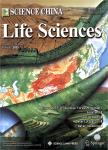Divergence in flowering time is a major component contributing to reproductive isolation between two wild rice species(Oryza rufipogon and O. nivara)
在 flowering 时间的分叉是贡献在二野米饭种(Oryza rufipogon 和 O. nivara ) 之间的繁殖隔离的一个主要部件作者机构:State Key Laboratory of Systematic and Evolutionary BotanyInstitute of BotanyChinese Academy of SciencesBeijing 100093China University of Chinese Academy of SciencesBeijing 100049China National Key Facility for Crop Gene Resources and Genetic ImprovementInstitute of Crop SciencesChinese Academy of Agricultural SciencesBeijing 100081China
出 版 物:《Science China(Life Sciences)》 (中国科学(生命科学英文版))
年 卷 期:2020年第63卷第11期
页 面:1714-1724页
核心收录:
基 金:supported by the National Natural Science Foundation of China (91731301) the grants from the Chinese Academy of Sciences (XDB31000000, XDA08020103) CAS/SAFEA International Partnership Program for Creative Research Teams
主 题:reproductive isolation flowering time speciation adaptation Oryza species
摘 要:It is of critical importance for our understanding of speciation process to determine the forms of reproductive isolation and their relative importance in species divergence. Oryza nivara and O. rufipogon are direct ancestors of Asian cultivated rice and a progenitor-daughter species pair. Investigating the reproductive isolation between them provides insights into plant speciation and helps understanding of the rice domestication. Here, we quantitatively measured the major components of reproductive isolation between the two species based on common garden and crossing experiments for three pairs of sympatric populations in Nepal, Cambodia and *** revealed significant differences in the flowering times between species pairs, with O. nivara flowering much earlier than O. rufipogon. A very weak reduction in seed set but no reduction in F1 viability and fertility were detected for the crosses between species relative to those within species. Moreover, we detected asymmetrical compatibility between species and found that emasculation significantly decreased pollination success in O. nivara but not in O. *** study demonstrates that the divergence between O. nivara and O. rufipogon is maintained almost entirely by the difference in flowering times and suggests that differential flowering times contribute to both habitat preferences and reproductive isolation between species.




